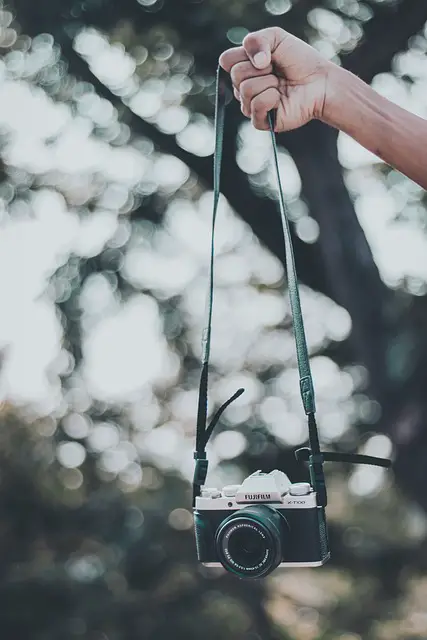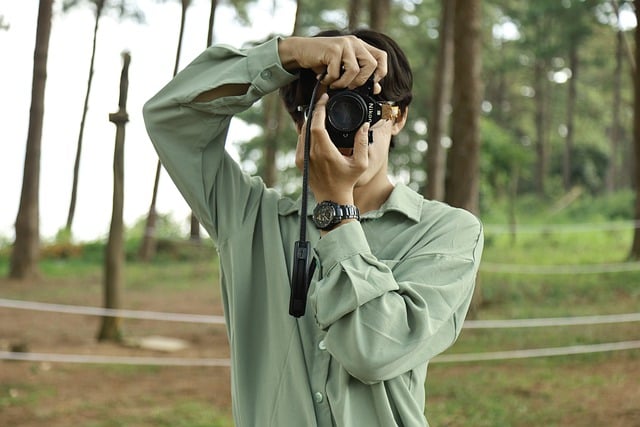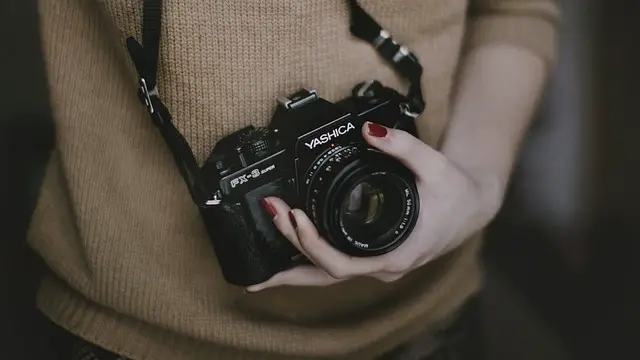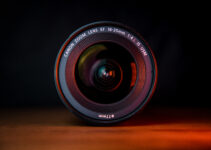Table of Contents
ToggleAre you looking for a convenient and stylish way to carry your camera gear?
A sling camera bag might be the perfect solution for you. Designed for photographers on the go, these bags allow quick access to your equipment while ensuring comfort and ease of movement.
With a single strap that crosses the body, a sling bag can be easily swung around to your front, giving you instant access to your camera, lenses, and accessories.
Whether you’re hiking, traveling, or capturing urban scenes, a sling camera bag offers the ideal blend of functionality and practicality for all your photography adventures.
Here how to add camera padding to camera bag?
Is it worth to use sling camera bag?
Using a sling camera bag can be worth it for several reasons. Firstly, its design allows for quick access to your camera and gear without having to remove the bag completely, making it ideal for capturing spontaneous moments.
The sling style also distributes weight more evenly across your body, reducing strain during long shoots compared to traditional backpacks.
Additionally, many sling bags are compact and stylish, making them suitable for both urban exploration and outdoor photography.
They often come with customizable compartments to fit various camera gear, ensuring your equipment is organized and protected.
However, if you carry a lot of gear or prefer extensive storage, a larger backpack might be more suitable. Ultimately, the choice depends on your photography style and needs.
If you value accessibility and comfort for short outings, a sling camera bag is definitely worth considering.
It is important to use sling camera bag?
Using a sling camera bag can be quite important for photographers who prioritize convenience and accessibility.

One of the key benefits is its design, which allows for quick and easy access to your camera and gear while on the move. This is particularly useful during events or street photography, where spontaneity is crucial.
The sling style also distributes weight across one shoulder, making it more comfortable for short to medium-duration outings, especially when you need to pivot the bag to your front for easy access.
Additionally, many sling bags come with customizable compartments that help organize your gear efficiently, protecting your equipment from damage.
Here, 10 best shimoda camera bag?
Moreover, a sling bag often strikes a balance between style and functionality, allowing you to blend in while carrying your gear.
While it may not hold as much as a full backpack, for photographers who travel light and require quick access, a sling camera bag can be an essential accessory.
How to use a sling camera bag?
Using a sling camera bag effectively involves a few key steps. First, adjust the strap to ensure a comfortable fit on your shoulder.
The bag should rest snugly against your back or side, allowing for easy movement while keeping your gear secure.
When you’re ready to access your camera, simply slide the bag around to your front. Most sling bags feature a flap or zipper that allows you to quickly reach your gear without fully removing the bag.
Organize your equipment within the compartments to make finding items easier—place your camera at the top for quick access and keep lenses or accessories in designated pockets.
While wearing the bag, maintain good posture to avoid strain on your shoulder.
When not in use, consider securing any loose straps to prevent them from catching on objects. Lastly, always ensure your bag is closed and secure before moving to protect your gear from damage.
7 steps to use sling camera bag
Step 1: Choose the Right Sling Bag
Selecting the right sling camera bag is crucial for maximizing your photography experience. Consider factors such as size, capacity, and design that suit your photography style. Look for a bag that can comfortably accommodate your camera, lenses, and accessories.
Evaluate your shooting habits—if you tend to travel light, a compact bag may suffice. For those who carry multiple lenses or accessories, opt for a larger bag with customizable compartments.
Here, is it safe to pack a camera inside a camera bag when going through the airpot security?
Materials and weather resistance also play a significant role. A durable, water-resistant fabric will protect your gear from the elements. Lastly, assess comfort features such as padded straps and breathable back panels, which enhance usability during long shooting sessions.
Take your time to research different brands and models, read reviews, and, if possible, try them on in-store. The right sling bag will not only provide protection for your equipment but also make your shooting experience more enjoyable and efficient.
Step 2: Adjust the Strap
Properly adjusting the strap of your sling camera bag is vital for comfort and ease of use. Begin by placing the bag on your shoulder, allowing it to rest against your back or side. The strap should be long enough to give you a comfortable reach without causing strain.
Adjust the length of the strap so that the bag sits securely against your body but is still easy to swing to the front when needed. A well-fitted strap prevents the bag from shifting while you move, providing stability and reducing the risk of gear damage.
Check for padding on the strap, which enhances comfort during extended wear. If you feel any discomfort or strain, readjust the strap length or position until it feels just right.
After adjusting, practice sliding the bag to the front and back again to ensure a smooth transition. The goal is to have quick access to your gear while maintaining a comfortable fit that supports your posture and mobility during shooting.
Step 3: Organize Your Gear
Efficient organization of your camera gear within the sling bag is essential for quick access and protection. Begin by laying out all your equipment, including your camera body, lenses, batteries, memory cards, and any other accessories.
Use the compartments and dividers provided in the bag to separate different items. Place your camera at the top or in the most accessible section for immediate reach. Next, allocate space for lenses, ensuring that heavier ones are positioned close to your back for better balance.
Here, 10 best vera bradely camera bag?
Smaller items like batteries and memory cards can be stored in zippered pockets or pouches to prevent them from getting lost. Additionally, consider using padded dividers to protect your gear from bumps and scratches.
As you organize, take a moment to familiarize yourself with where each item is located. This familiarity will make it easier to grab what you need quickly during a shoot. Periodically reassess your organization as your gear collection grows or changes to maintain optimal efficiency and protection.
Step 4: Practice Quick Access
Practicing quick access to your gear is crucial for making the most of your sling camera bag. Start by wearing the bag and adjusting it to your preferred position, ensuring it rests comfortably against your body.
Next, simulate different shooting scenarios where you need to access your camera quickly. Slide the bag from your back to your front, and open the compartment where your camera is stored. Familiarize yourself with the zipper or flap mechanism to ensure a smooth operation without fumbling.
Practice removing your camera and any additional equipment swiftly. The more you practice, the more fluid your movements will become, allowing you to react promptly when a photographic opportunity arises.
Also, consider practicing with one hand, as you might need to keep your other hand free to hold your camera or adjust settings. The goal is to create a seamless process that enables you to transition from carrying your gear to shooting without losing valuable time.
Step 5: Maintain Good Posture
Maintaining good posture while using a sling camera bag is essential for comfort and long-term health, especially during extended shoots. Begin by positioning the bag correctly on your shoulder, ensuring it sits evenly without pulling to one side.
Be mindful of your posture as you move. Keep your back straight, shoulders relaxed, and avoid leaning excessively to one side. This will help distribute the weight of the bag more evenly across your body, reducing strain on your muscles and joints.
Here, shoulder pain what kind of camera bag should you use?
If you start to feel discomfort, take a moment to readjust the bag or switch shoulders to give one side a break. Engaging your core muscles can also provide better support and stability while you’re walking or standing.
During long sessions, make a habit of taking breaks to stretch and relieve any tension. Good posture not only enhances comfort but also allows you to remain agile and ready for spontaneous shots, keeping you focused on your photography.
Step 6: Secure Loose Straps
Securing loose straps on your sling camera bag is an important step in ensuring both your safety and the protection of your gear. Unsecured straps can easily catch on objects while you’re moving, posing a risk of snagging or causing the bag to shift unexpectedly.
Begin by identifying any excess strap length after adjusting for comfort. Most bags come with strap keepers or loops designed to hold excess strap material securely. Tuck any loose ends into these keepers to prevent them from dangling and getting in your way.
If your bag doesn’t have built-in keepers, consider using Velcro straps or elastic bands to secure the loose sections. This not only keeps the straps out of your way but also helps maintain a neat and tidy appearance.
Regularly check the straps for wear and tear, as frayed straps can compromise your bag’s functionality. By keeping loose straps secured, you enhance your overall shooting experience and minimize potential distractions or hazards.
Step 7: Take Care of Your Bag
Taking care of your sling camera bag is essential for ensuring its longevity and maintaining the protection it offers for your gear. Begin by regularly cleaning the exterior and interior of the bag to remove dust, dirt, and debris. Most bags can be wiped down with a damp cloth; for tougher stains, use a mild soap solution.

If your bag is water-resistant or waterproof, check the zippers and seams periodically to ensure they remain intact and functional. Over time, zippers may accumulate dirt or get stuck, so lubricating them occasionally can help keep them working smoothly.
Store your sling bag in a cool, dry place when not in use, away from direct sunlight to prevent fading and material degradation. Consider using a protective cover if you plan to store it for an extended period.
Lastly, regularly assess the bag for any signs of wear or damage. Addressing small issues early can prevent bigger problems down the line, ensuring your bag remains a reliable companion for all your photography adventures.
5 Methods to use sling camera bag
Method 1: Quick Access Technique
One of the most effective methods to use a sling camera bag is mastering the quick access technique. This approach is particularly beneficial for photographers who frequently encounter spontaneous moments that require immediate action.
To begin, ensure the bag is adjusted to a comfortable height on your shoulder, allowing it to sit snugly against your back or side.
When you’re ready to shoot, simply rotate the bag to your front without fully removing it.
This allows you to access your camera and gear swiftly. Open the bag’s flap or zipper with one hand while holding your camera in the other. To practice, repeatedly simulate this movement until it feels smooth and instinctual.
Additionally, familiarize yourself with the placement of your gear inside the bag.
Here, how do you support a heavy camera lens?
Position your camera at the top or in the most accessible compartment, followed by lenses or accessories you use most frequently. The goal is to minimize the time spent fumbling for items.
With practice, this technique enables you to transition seamlessly from carrying your bag to shooting, maximizing your responsiveness to photo opportunities.
Regular practice will help you refine your movements, ensuring that quick access becomes second nature, allowing you to capture the moment without delay.
Method 2: Proper Weight Distribution
Proper weight distribution is crucial when using a sling camera bag, as it directly impacts your comfort and mobility during shoots. Start by assessing the gear you plan to carry and its overall weight.
Heavier items, such as camera bodies and lenses, should be placed closest to your back for better balance and stability.
When packing your bag, use the available compartments strategically. Place your camera at the top and in a central position, allowing you to access it quickly.
Follow this by adding heavier lenses or equipment next to the back panel, distributing the weight evenly across your body.
Avoid overloading the bag, as excessive weight can lead to discomfort and fatigue. If you find yourself carrying more gear than you can comfortably manage, consider downsizing or investing in additional bags for different shooting scenarios.
While on the move, regularly check your posture and make adjustments as needed. If you start to feel strain on one side, shift the bag to your other shoulder for relief.
Maintaining proper weight distribution not only enhances your comfort but also allows for greater agility and responsiveness, enabling you to focus on your photography without distraction.
Method 3: Secure Storage for Accessories
Utilizing secure storage for accessories within your sling camera bag is essential for protecting your gear and ensuring you have everything you need while shooting.
Start by identifying the various accessories you typically carry, such as lenses, batteries, memory cards, and cleaning supplies.
Most sling bags come equipped with dedicated compartments and pockets designed to accommodate these items. Use padded dividers to create separate sections for your lenses, keeping them secure and preventing damage during transport.
Here, how to clean a tenba polyethelene camera bag?
For smaller items like batteries and memory cards, utilize zippered pockets or elastic pouches to avoid losing them.
Labeling compartments can also be beneficial, especially if you frequently switch between different types of gear. This organization method allows you to locate items quickly without wasting time digging through your bag.
When packing your accessories, ensure that they are not overly crammed, as this can lead to wear and tear. Regularly inspect your gear for any signs of damage or wear.
By prioritizing secure storage for your accessories, you create a functional and organized environment that supports your photography efforts and enhances your shooting experience.
Method 4: Adjusting to Different Environments
Adapting your sling camera bag to different environments is a crucial method for optimizing its use during various shooting conditions. Depending on the location, you may need to change how you pack and utilize your bag.
For outdoor shoots, consider adding protective covers or rain sleeves to shield your gear from the elements. Many sling bags are designed with water-resistant materials, but having extra protection is always beneficial.
When shooting in urban environments, where mobility is essential, keep your bag lightweight and streamlined.
Opt for just the essentials: your camera body, one or two lenses, and a few accessories. This minimizes bulk and allows for quick movement through crowds or tight spaces.
In contrast, if you’re shooting in a studio or controlled setting, you might want to pack extra gear, such as additional lenses, reflectors, or lighting equipment. Adjust the internal organization of your bag to accommodate these items while keeping everything secure.
Be mindful of your surroundings, as different environments may require you to change your approach to accessing your gear.
By adjusting your sling camera bag according to the environment, you ensure that you remain prepared and efficient, enhancing your overall photography experience.
Method 5: Regular Maintenance and Care
Regular maintenance and care of your sling camera bag are essential for ensuring its longevity and functionality. Start by routinely inspecting the bag for any signs of wear or damage.
Check the straps, zippers, and seams for fraying or loose threads, as addressing these issues early can prevent bigger problems down the line.
Cleaning your bag is also crucial, especially if you frequently shoot in dusty or wet environments. Use a damp cloth to wipe down the exterior, and for tougher stains, a mild soap solution can help. Ensure that the bag dries completely before storing it to prevent mold and mildew growth.
If your bag features removable compartments or dividers, consider washing them separately according to the manufacturer’s instructions. This will help maintain their shape and functionality over time.
Additionally, store your sling bag in a cool, dry place when not in use, avoiding direct sunlight to prevent fading and material degradation.
By establishing a regular maintenance routine, you not only prolong the life of your sling camera bag but also ensure that it remains a reliable and protective accessory for your photography adventures.
5 Benefits to use sling camera bag
Benefit 1: Quick Access to Gear
One of the most significant benefits of using a sling camera bag is the quick access it provides to your gear.
Unlike traditional backpacks that require you to remove the entire bag to retrieve your camera, sling bags are designed for seamless transitions.
With a simple rotation of the bag from your back to your front, you can access your camera and other essential gear without missing a beat.
This feature is particularly valuable for photographers who often shoot in dynamic environments, such as street photography, wildlife, or events where opportunities arise spontaneously.
The ability to grab your camera quickly allows you to capture those fleeting moments without the frustration of fumbling through a packed bag.
Many sling bags are equipped with flaps or zippers that facilitate easy opening, allowing for one-handed access to your gear. This quick-access capability not only enhances your shooting efficiency but also encourages you to be more spontaneous and creative with your photography.
The confidence that comes with knowing you can grab your gear quickly leads to a more enjoyable shooting experience, where you can focus on your craft instead of worrying about gear logistics.
Benefit 2: Comfortable Weight Distribution
Another major advantage of using a sling camera bag is the comfortable weight distribution it offers. Sling bags are designed to rest against your body, which helps to evenly distribute the weight of your camera and gear.
This ergonomic design reduces strain on your shoulders and back, making it easier to carry your equipment for extended periods.
When wearing a sling bag, the weight is primarily supported by one shoulder, but many models feature padded straps that provide additional comfort and support.
This design allows you to easily adjust the bag’s position for balance, reducing fatigue during long shoots. If you find yourself feeling discomfort on one side, you can simply shift the bag to your other shoulder, giving your body a break.
For photographers who spend hours outdoors or on the move, this comfort is invaluable. Whether you’re hiking to a scenic location or navigating a bustling city, a well-designed sling bag can help you maintain your focus on photography instead of discomfort.
The combination of quick access and comfortable weight distribution allows you to capture the perfect shot without the burden of heavy gear weighing you down.
Here, does tumi make a camera bag?
Benefit 3: Stylish and Functional Design
Sling camera bags often feature a stylish and functional design that appeals to photographers who value aesthetics as much as utility. Available in a variety of materials, colors, and styles, these bags can complement your personal style while still serving as practical gear carriers.
Unlike traditional camera bags that may look bulky or utilitarian, sling bags often have a sleek profile that makes them suitable for urban environments and casual outings.

Many photographers appreciate that they can carry their gear without drawing too much attention or looking out of place in social settings.
This stylish aspect is especially beneficial for street photographers who want to blend in with their surroundings while still having quick access to their equipment.
Functionality is equally important; most sling bags are designed with multiple compartments, adjustable dividers, and pockets for accessories, allowing you to organize your gear efficiently. The combination of style and function means you don’t have to sacrifice one for the other.
A well-designed sling camera bag enhances your overall experience by making it easier to carry your gear while also reflecting your personal taste and style, making it an essential accessory for photographers on the go.
Benefit 4: Versatility for Different Activities
The versatility of sling camera bags is another significant benefit that makes them a popular choice among photographers. These bags are designed to accommodate a range of shooting styles and environments, making them suitable for various activities. Whether you’re embarking on a hike, exploring a city, or attending a wedding, a sling camera bag can adapt to your needs.
For outdoor photographers, many sling bags are made from weather-resistant materials, offering protection against the elements.
They can comfortably carry your camera body, multiple lenses, and accessories while allowing for easy access on the move. Additionally, some models include features like tripod straps or attachment points for additional gear, enhancing their functionality.
In urban settings, sling bags maintain a low profile, making them ideal for street photography. Their compact size makes navigating crowded areas easier without sacrificing gear capacity.
This adaptability extends to everyday use as well; a sling bag can serve as an everyday bag for carrying your laptop, books, or personal items.
By catering to various activities, a sling camera bag becomes a versatile investment, allowing you to enjoy different photography experiences without needing multiple bags for each occasion.
Benefit 5: Enhanced Security for Your Gear
Enhanced security is a vital benefit of using a sling camera bag, particularly in busy or unfamiliar environments.
The design of sling bags allows them to be worn close to your body, making it more challenging for potential thieves to access your gear without your notice. This close-fitting style offers an added layer of protection compared to traditional backpacks, which may be easier to open without detection.
Many sling bags also feature locking zippers or hidden pockets, providing additional security for your valuables. By keeping your gear secure and within reach, you can focus more on your photography rather than worrying about theft or loss.
In crowded areas, such as markets, festivals, or public transportation, the ability to keep your bag close helps you maintain control over your equipment.
Here, how to clean manfrotto camera bag?
The compact nature of sling bags allows you to navigate tight spaces easily, reducing the risk of bumping into people or objects that could compromise your gear’s safety.
Ultimately, the enhanced security of sling camera bags allows photographers to explore their environments with peace of mind.
This confidence enables you to immerse yourself in your work and capture stunning images without the constant worry of protecting your gear.
What sling bag do you use for your camera?
One highly regarded option is the Peak Design Everyday Sling. This bag is known for its versatility and stylish design, making it suitable for both casual and professional use. It features customizable internal dividers, allowing photographers to organize their gear effectively.
Another great choice is the Lowepro Slingshot series, which offers excellent support and comfort, especially for outdoor adventures.
Its unique design allows for easy access to your camera without removing the bag.
For those looking for a more affordable option, the Targus CitySmart Sling Backpack is a practical choice, providing ample storage and protection for camera gear while being lightweight and easy to carry.
These bags all prioritize quick access, comfort, and functionality, making them ideal for photographers on the go.
Are camera sling straps comfortable to wear when you also carry a backpack?
Camera sling straps can be comfortable to wear while carrying a backpack, but their comfort largely depends on the design of both the strap and the backpack.
Sling straps are typically worn across one shoulder, allowing for quick access to your camera, while a backpack distributes weight across both shoulders.
To ensure comfort, choose a well-padded sling strap that fits securely without digging into your shoulder.
The backpack’s fit is also crucial; it should not be too heavy or cumbersome, as this can lead to strain when combined with the sling strap.
Additionally, adjusting the lengths of both the sling strap and the backpack straps can help achieve a balanced load, minimizing discomfort.
However, if the backpack is particularly heavy or if the sling strap is not well-designed, you may experience fatigue or discomfort over extended periods. Ultimately, comfort can vary based on personal preference and the specific gear being used.
Related faq’s
How do you use a sling bag?
To use a sling bag, first adjust the strap for a comfortable fit, allowing it to rest against your back or side. When you need access, simply slide the bag around to your front without removing it.
Open the flap or zipper to reach your gear quickly. Organize your items within compartments to ensure easy retrieval, keeping frequently used items at the top.
Maintain good posture while wearing the bag to avoid strain, and secure any loose straps to prevent them from getting caught. Regularly check your gear and bag for wear and tear to ensure longevity and functionality.
How to properly store a camera in a camera bag?
To properly store a camera in a camera bag, first, ensure the bag is clean and dry.
Use padded compartments or dividers to protect the camera from impact. Place the camera body upright, with the lens facing upward or toward a padded divider to prevent pressure on the lens.
If using multiple lenses, store heavier ones closer to the bag’s back for better weight distribution.
Always secure the camera with the bag’s closure to prevent dust and moisture entry. Additionally, keep any accessories, like batteries and memory cards, organized in designated pockets for easy access.
Should you wear a sling bag on the left or right side?
Whether to wear a sling bag on the left or right side largely depends on personal preference and comfort.
If you’re right-handed, wearing the bag on your left side can allow for easier access to your camera with your dominant hand. Conversely, left-handed individuals may find it more comfortable to wear the bag on their right side.
Consider your body’s natural posture and how the bag’s weight feels during use. It’s also beneficial to switch sides occasionally to prevent strain on one shoulder. Ultimately, choose the side that feels most comfortable and allows for easy access to your gear.
How do you pack a camera bag for travel?
To pack a camera bag for travel, start by laying out your essential gear, including your camera body, lenses, batteries, and memory cards.
Use padded dividers to organize the items, placing the camera body at the top for easy access. Store heavier lenses close to your back for better weight distribution.
Protect delicate accessories with padded pouches or cases. Don’t forget to pack cleaning supplies, like a microfiber cloth and brush.
Ensure everything is secure and closed, and consider adding a rain cover for weather protection. Finally, check that the bag is comfortable to carry for extended periods.
Conclusion
Using a sling camera bag effectively enhances your photography experience by providing convenience and comfort. Start by adjusting the strap for a secure fit, allowing for quick access to your gear.
Organize your equipment within padded compartments to ensure protection and easy retrieval. Practice smooth transitions by sliding the bag from your back to your front when you need to shoot.
Regularly maintain both the bag and your gear to ensure longevity and functionality.
By mastering these techniques, you can enjoy the benefits of a sling camera bag, enabling you to capture moments with ease and spontaneity while on the go.






